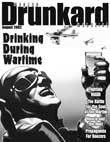Switchfoot wrote:So flying home from an all-nighter we come across this situation regarding weather radar:
Ground observations indicated cells in the 20 thousand foot range at the halfway point and the same near home (but dissipating). We get to the halfway point at FL240 and there is nothing on the airborne unit; nothing being painted, no colour, and visibly, nothing except scattered clouds around the area.
At a minimum, you should have been displaying Ground Returns on the outer edge of the Weather Radar Unit. Why?
By adjusting the tilt to display ground returns on the outer edge of the Weather Radar Display Unit, you have done a number of things, including:
1. Ensuring that the unit itself is working,
2. That the tilt is properly calibrated (More on this shortly),
3. Having a method to detect a “Black Hole” (Explanation below)
Explanations.
1. Self explanatory,
2. Radar antennas come in a variety of sizes, and each size provides an inversely proportional radar beam (a cone).
a. Larger Transport Category Antenna (typically 30 inch) produce a 3 degree beam (cone)
b. A 10 inch antenna would produce a beam of approximately 18 degrees,
c. Diameters between 30 inches, and 10 inches provide various beam diameters between greater that 3 degrees, and less than 18 degrees.
d. To determine the beams diameter at any distance, simply recall the old 1 in 60 rule.
e. For example, in a Transport Category Aircraft, with a 30 inch antenna, the radar beam diameter would be approximately 18000 feet, at 60 miles. (1 in 60, with a 3 degree beam, means 3 statute miles of diameter at 60 miles) 1 SM equates to approx 6000 feet. So, we have approx 18000 feet of beam at 60 miles. BUT, remember that with tilt set to Zero, half of that beam is above the horizon, and half is below(assuming a gyro stabilized unit).
f. Not understanding this can lead to over-scan or under-scan.
3. By painting ground returns, AT MOST TIMES, you protect yourself against attenuation problems (Black Hole).
a. When a radar unit displayes weather returns, and then, also provides a ground return BEHIND that weather, you can be confident that the weather displayed is accurate, and that the unit is not attenuating. A black area behind a weather return, where a ground return should be displayed, indicates clearly that the “Black Hole” exists.
b. Also, by painting a ground return you can almost guarantee that your weather radar beam is scanning the freezing level somewhere along your track. This also helps to prevent over-scan and under-scan
c. When weather returns appear on the outer edge with the ground returns, you can properly use the tilt function to scan the weather mass vertically. This will give you a better understanding of that weathers properties.
Switchfoot wrote:Getting closer to home, still nothing being painted on the airborne unit, but can see lightening in the distant (not close to landing airport from altitude), ground observer at the MF cannot see any lightening, just showers, and centre has is not showing anything.
I would guess that the freezing level was not in the radar beams field of view (Line of sight), and Weather Radar is not so good at detecting ice. (Ice Crystals, Hail, etc).
Switchfoot wrote:In the descent thru 12000' ASL, get into heavy precipitation, lightening and moderate turbulence. Basically flew thru a dissapating thunderstorm cell. When you're fatigued after flying all night, not a good time!
Now I’m convinced of this...
Switchfoot wrote:So my question is why? Why would the airborne unit not paint anything until we were already in the storm? The unit works, and tilt and range functions were used correctly. Is it possible that precipitation was so heavy (and trust me, it was), that embedded CB's behind it were not being painted? I'm sort of new to this IFR stuff and wondering if someone can shed some information.
I hope this answers the question. I’ve taught Weather Radar at several airlines over the past years. It’s not a complicated devise to fully understand, but does require a technique, and you will have to develop several weather avoidance strategies.
That said, sorry for the short explaination, but I’m flying today, and don’t have much time now. If you like, you can email me for more details.
aa321486@yahoo.co.uk
Cheers, and fly safe.







